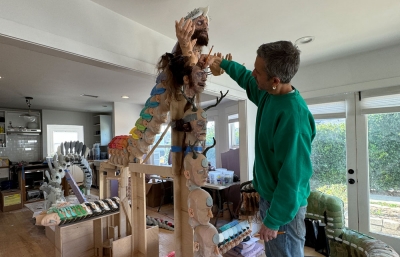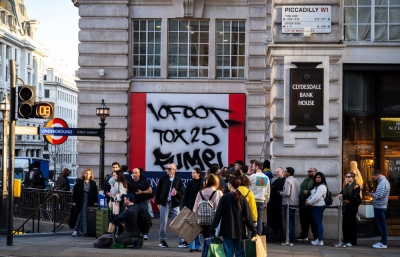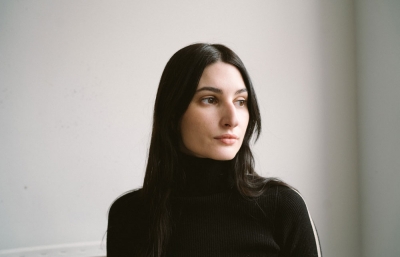Do you still get a rush from painting murals, and what keeps you motivated to paint them?
I like to paint in general, and painting murals is a great exercise. I’ve learned a lot, not only technically, but also how to organize myself in front of a big painting. I still enjoy it once in a while, but I’m not as motivated as I was. I have a lot of fun being at the studio and painting, so I don’t need to go that far to enjoy painting.
Nowadays, for me, it feels like I’m preparing for a match. The days before starting the mural I’m preparing myself. It’s like a fight that takes several days. During the mural process I will be totally immersed in it, so I try to be a bit prepared mentally and physically.
At least now, I bring a colored sketch. So I know that, in the worst case, it should look something similar to that. But as I mentioned many times, I used to go without any drawing at all, or maybe with a few lines in a small piece of paper. I can’t do that anymore, I would suffer a lot, because you can’t tell how the painting will evolve. I do that on small sized pieces, where you can cover the painting or throw it away, but some of these murals are on the surface of a 115-foot building. The last time I freestyled a wall, I had nightmares and couldn’t sleep. That’s why I prefer to bring a sketch or something more elaborate.
As part of a particular mural movement in European street art, and after nearly a decade or more later, what do you think of that era? For many artists, it was like a band on tour, city to city mural-hopping.
When people see what I do, usually they are surprised that I’ve been in so many places painting murals. Well, yes, I have been! But when I was in a particular city, or when I was in the mode of painting a lot of murals, I just saw the paint supply stores, hotels and lots of walls when I was in a given place! Honestly, I feel like I should’ve enjoyed those trips a bit more. I was trying so hard to do a good job, that I forgot about the rest. Some of those walls were painted in four days, and the day after, I was heading to the airport. There was no budget for staying more days, and I didn’t have money to extend my stay at the hotel, so in my early walls, it was always pretty much a hit and run.
I feel we put a lot of energy into projects that occasionally were not worth it. Okay, we were getting our trip and materials paid. And sometimes we even had a hotel; but there were also times when the “place” to stay was baaaad! And, of course, at times, we had to pay for our meals, too. My feeling is that many times we put in more from our part than organizers did from theirs. It was good when the conditions were clear from the very beginning, so you knew where you were going. If they had a lower budget but people were nice, intentions were good and things were smooth, projects were welcome. There were also some good projects where things were smooth, but those were rare.
It was fun, though. However, I feel we learned how to deal with difficult situations and still managed to finish our thing. But of course all these problems that took place during the process affected the result negatively. There are some crazy stories behind those painted walls.










